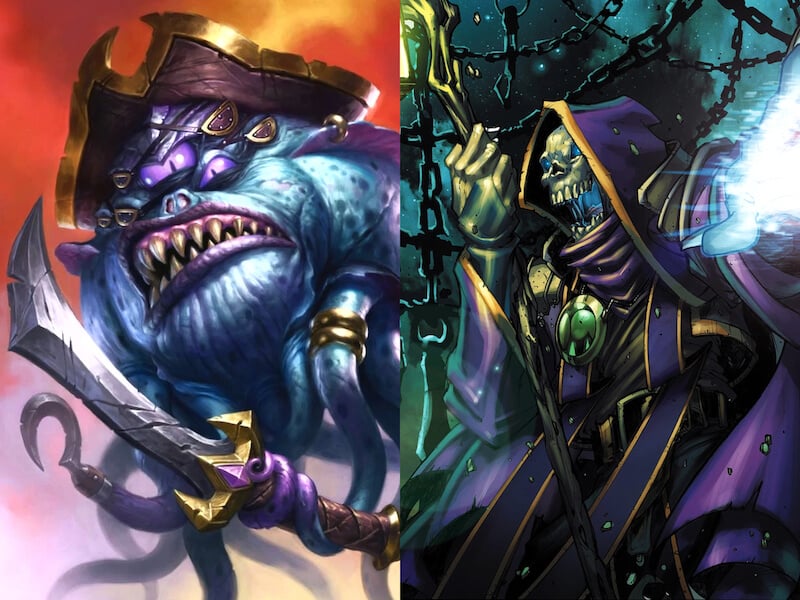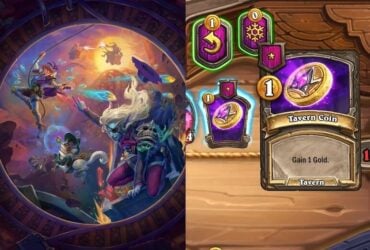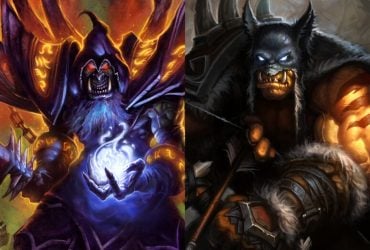Hearthstone has been captivating the gaming world with its unique blend of strategic gameplay, immersive lore, and dynamic card mechanics. Since its launch in 2014, hundreds of cards have been introduced, each bringing something unique. But some stand above the rest, cards so powerful, innovative, or just plain fun that they’ve defined the game’s fabric.
From Showdown in the Badlands to all the way back in the beta, let’s go over the top 25 greatest Hearthstone cards to have ever been printed (digitally).
25 Best Hearthstone Cards of All Time
Reno Jackson
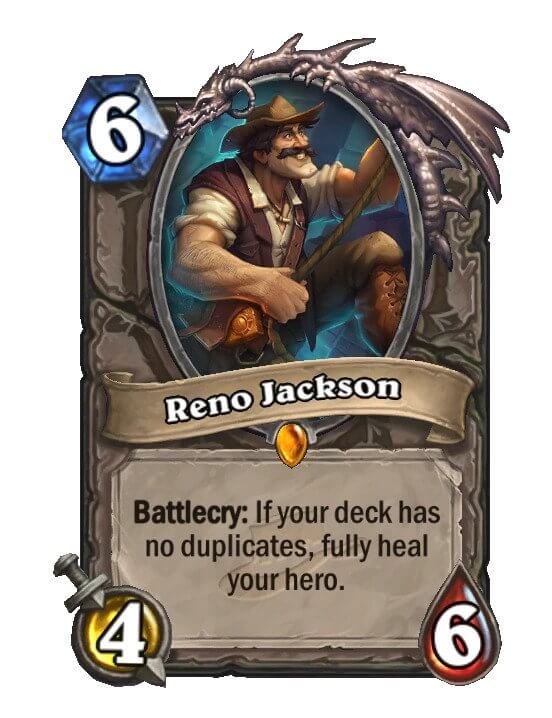
The phrase “We’re gonna be rich!” has either brought you a significant amount of pain or relief. When talking about Hearthstone’s greatest cards, the audacious adventurer Reno Jackson is invariably part of the conversation. An explorer and ‘relicologist,’ Reno introduced a unique mechanic upon his introduction in the League of Explorers. His Battlecry, which fully heals your hero, comes at the steep cost of having no duplicate cards in your deck.
This condition reshaped the game’s meta, encouraging diversity in deck builds while adding a layer of complexity in managing resources. This stimulated new strategies and birthed entirely new archetypes, aptly named ‘Reno decks.’ Despite the unique challenge his deck restriction presents, Reno’s incredible healing ability and his synergy with other special cards have proven invaluable to innovative players.
With the influx of singleton cards in the new Showdown in the Badlands expansion, expect to see Reno even more in the Wild format.
Zephrys the Great
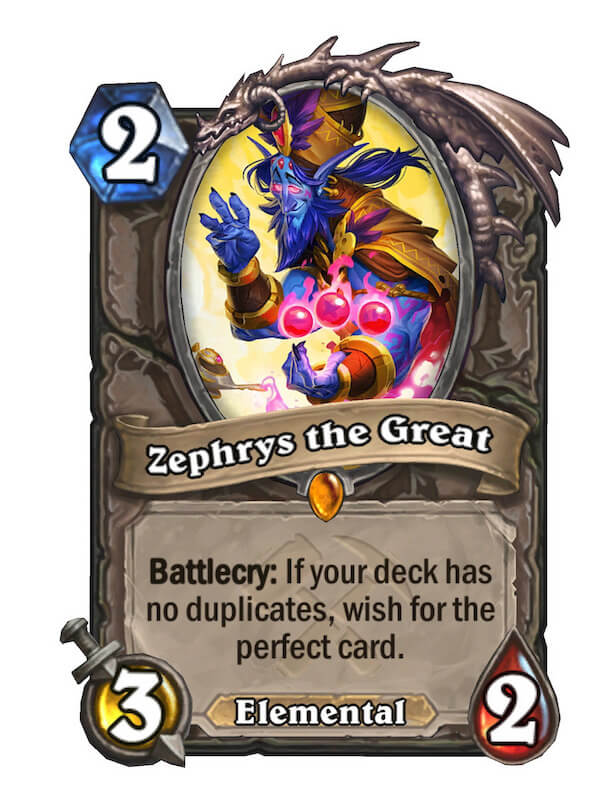
Zephrys the Great, the wish-granting genie, presents a flexible solution to many situations. This card offers a level of tactical advantage unmatched by any other. Released as part of the Saviors of Uldum set, Zephrys’ Battlecry allows the player to “wish” for the perfect card in any given situation. The possibilities are vast: It could provide a life-saving heal, a game-winning damage spell, or a critical board clear. Zephrys demands an understanding of Hearthstone’s mechanics and card pool to be utilized to its maximum potential, a feature that adds a depth of strategy to the game. For its versatility, Zephrys is a staple in any Highlander deck.
Brann Bronzebeard
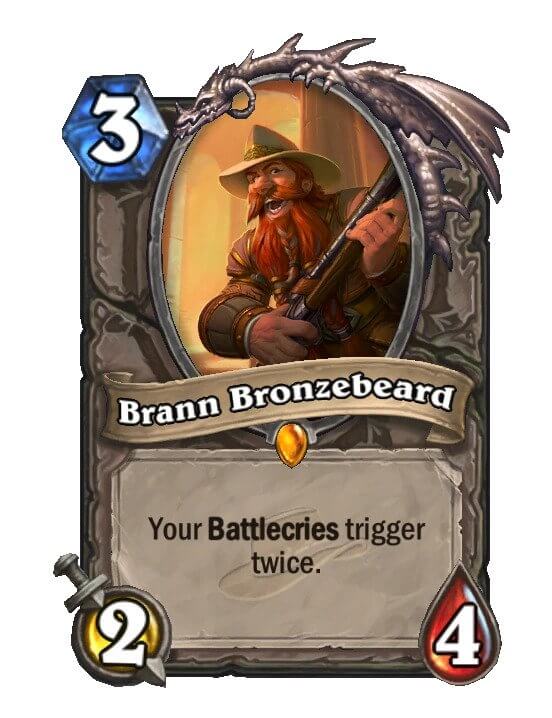
Brann Bronzebeard, the jovial explorer from the League of Explorers, is an iconic card in Hearthstone. His ability to double battlecries opened up a new level of strategy and deck-building. Imagine the possibilities: double the damage, double the healing, or double the minion summoning. Brann’s synergies with other powerful battlecries have led to some of the most explosive plays and unexpected victories. Although Brann has not been directly nerfed, his relevance has evolved with the game’s overall changes. His value varies based on the available cards in any expansion, keeping Brann in the players’ minds.
Baku the Mooneater
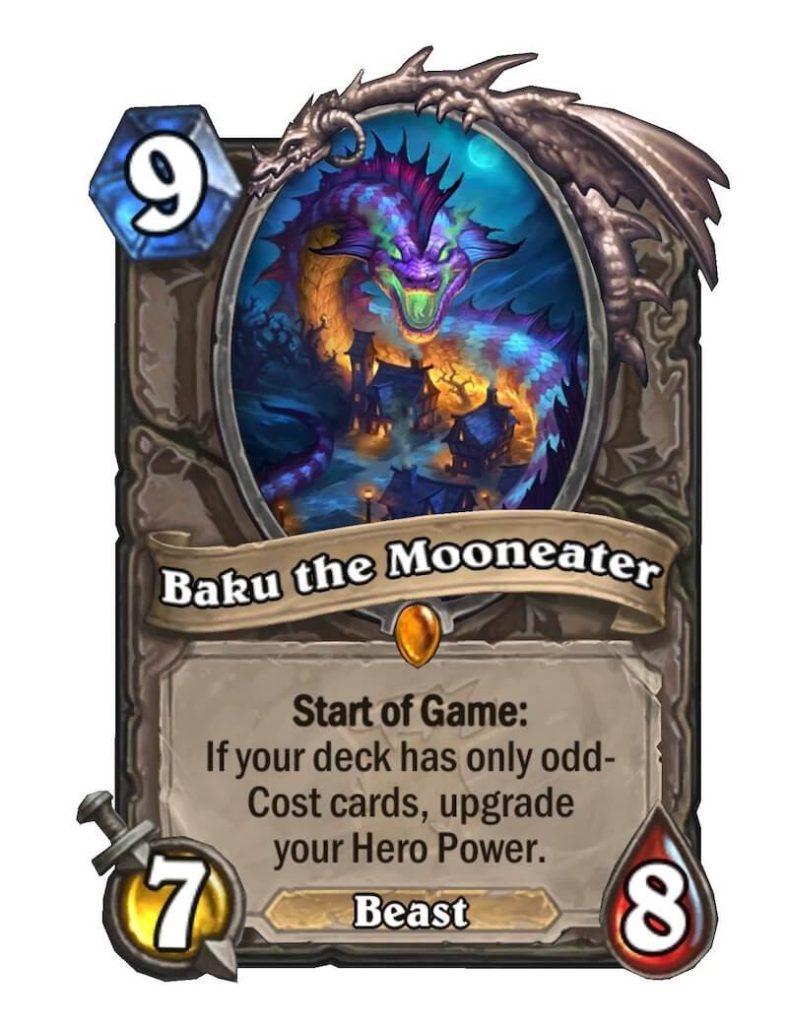
A card that catalyzed a significant shift in Hearthstone’s meta was Baku the Mooneater. This gigantic beast from the Witchwood expansion champions the strategy of restriction. Baku upgrades your hero power at the start of the game at the cost of limiting your deck to only odd-cost cards. This deck-building limitation brought to life a new style of play, often leading to early game domination. However, its overwhelming power led to Baku and other similar cards being moved out of Standard mode into the Hall of Fame, signifying its powerful impact on the game’s balance.
Yogg-Saron, Hopes End
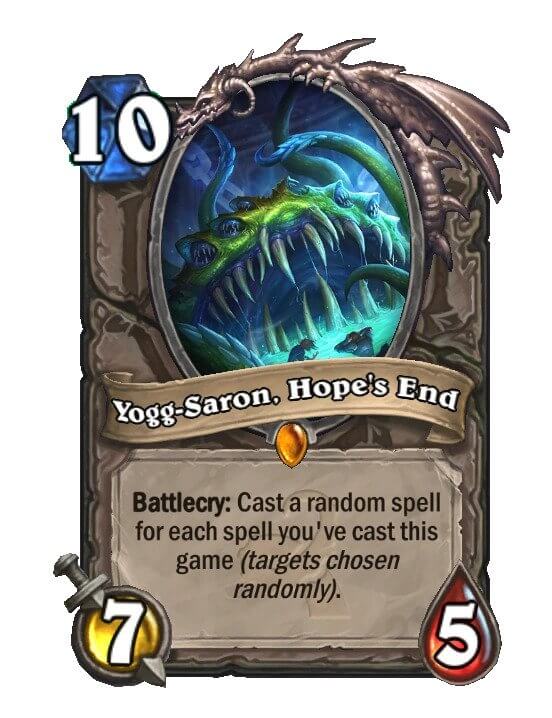
Yogg-Saron is a card that embodies Hearthstone’s spirit of fun and unpredictability. Its Battlecry, which casts a random spell for each spell you’ve cast in the game, has led to some of the most memorable moments in Hearthstone history. The chaotic outcomes can range from awe-inspiring game swings to heartbreaking self-destruction. This level of randomness has been controversial within the player base, leading to a significant nerf. Initially, Yogg would continue casting spells irrespective of what happened during the process. Yogg was nerfed a couple of years ago, where if it was destroyed, silenced, or removed from the battlefield in any way, the spell-casting ended. This nerf has since been reversed, and Yogg is returning to its former glory.
Ragnaros the Firelord
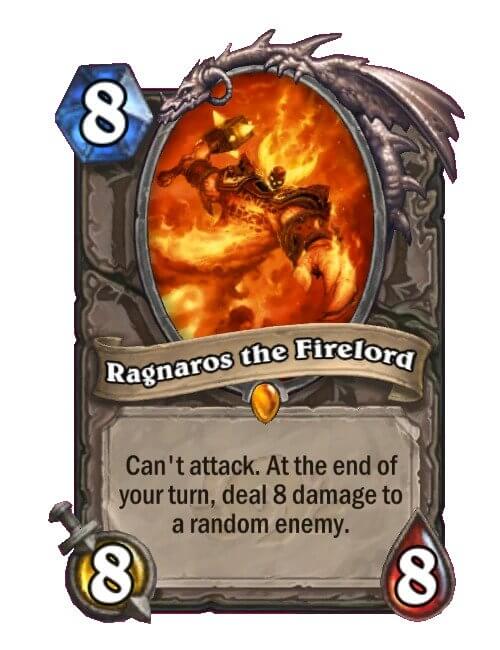
Regarding game-changing cards, Ragnaros the Firelord is a name that instantly springs to mind. With his fiery entrance and ability to deal eight damage to a random enemy at the end of each turn, Ragnaros can instantly shift the momentum of the game. Known for his aggressive and high-impact plays, Ragnaros has become a fan favorite and a card many players recall with nostalgia.
Ragnaros was used so much that he was moved to the now-defunct “Hall of Fame” card set back in 2017. He has since then been readded back to the Core set, reigniting his potential use in Standard. Despite declining usage in the current meta, Ragnaros remains a powerful and dominant presence that we all remember fondly. DIE INSECT!
Prince Renathal
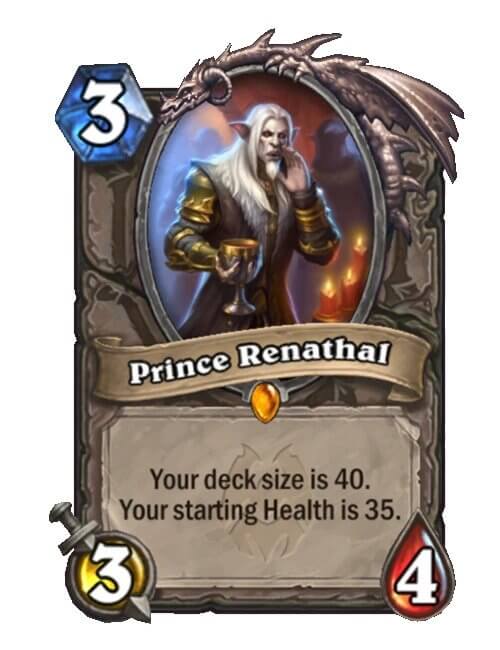
While unassuming at first glance, the legendary Prince Renathal shook the Hearthstone meta upon release. When released as part of the “Murder at Castle Nathria” expansion, the card broke the mold with its unique ability to augment the player’s deck size and starting Health to a whopping 40 each. This allowed for extensive deck strategies, reshaping how gamers approached their game plan. But with a decent three-attack and four health stats for its cost, Prince Renathal was a strategic marvel and a serviceable presence on the board.
However, six months after his release in June 2022, developers applied a balance change, reducing the starting health increase to 35. Prince Renathal continues to see constant play in both the Standard and Wild metas despite the nerf. This awesome legendary changed how we perceive the boundaries of deck-building and health points.
Loatheb
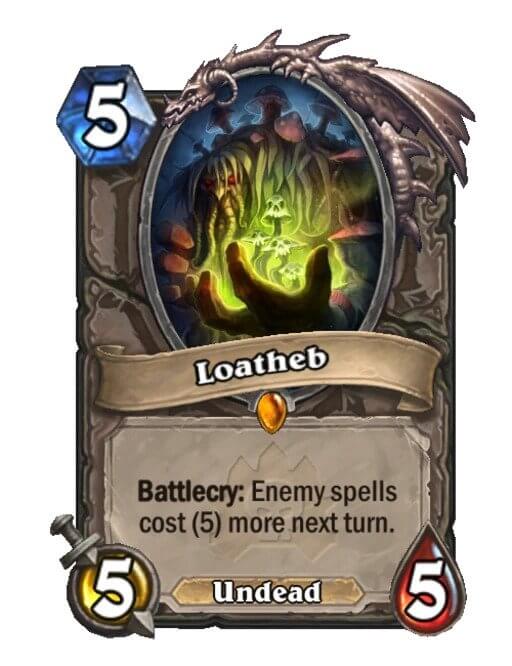
This fungal monstrosity from the Naxxramas expansion has been a stalwart in many Hearthstone decks. Loatheb has a unique and tactical battlecry, which increases the cost of your opponent’s spells by five mana the next turn. This ability can disrupt the opponent’s next turn, hindering their ability to swing the game back in their favor, especially against spell-heavy decks.
While Loatheb has not undergone any nerfs, its effectiveness has fluctuated with the varying metas. However, in the right environment, Loatheb can be a real game-changer. In the current meta, Loatheb sees decent play in Control-heavy decks.
Leeroy Jenkins
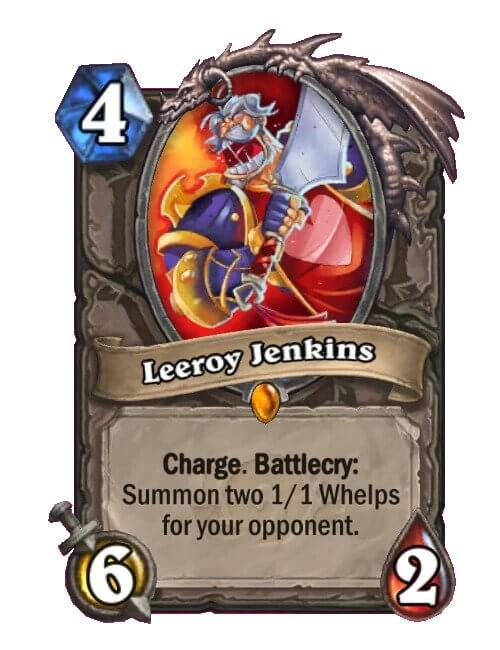
Leeroy Jenkins, the reckless paladin charging into a room full of dragon whelps, is a card that epitomizes the spirit of Hearthstone’s flavorful and humorous approach to game design. This card is often the final nail in the coffin, providing significant damage to secure the win. Despite a Nerf increasing his cost from 4 to 5 mana, Leeroy’s charge ability, combined with his solid six attack points, continues to make him a prominent tool for aggressive strategies.
Zilliax
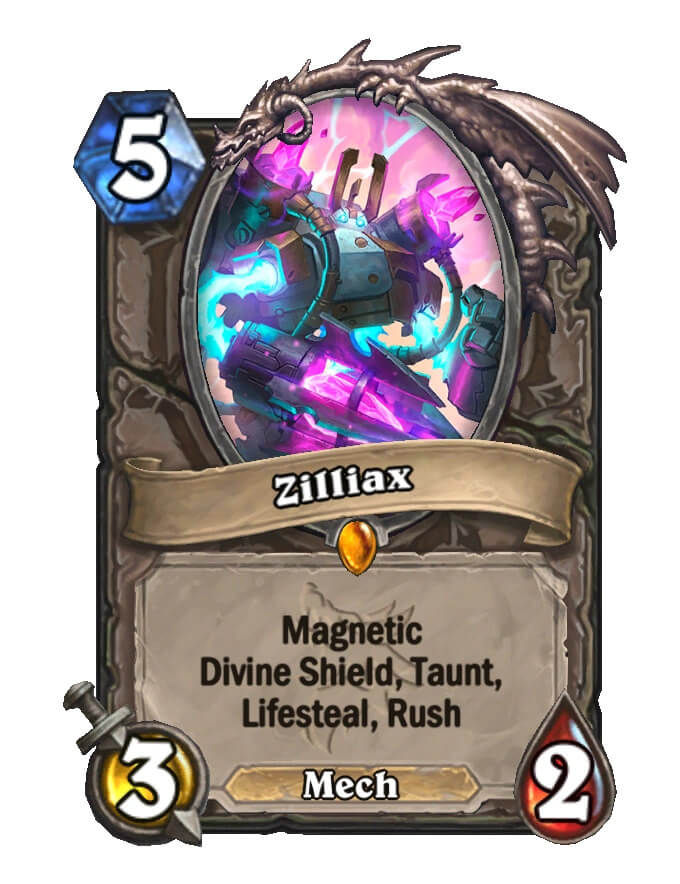
Of all the cards in Hearthstone’s history, few can match the versatility of Zilliax. As the poster child of the Magnetic keyword introduced in the Boomsday Project, Zilliax can adapt to various scenarios, thanks to its combination of Lifesteal, Rush, and Divine Shield. Whether to remove a threat, stabilize the health total, or just as a solid body on the board, Zilliax has become an invaluable part of many deck archetypes.
Sylvanas Windrunner
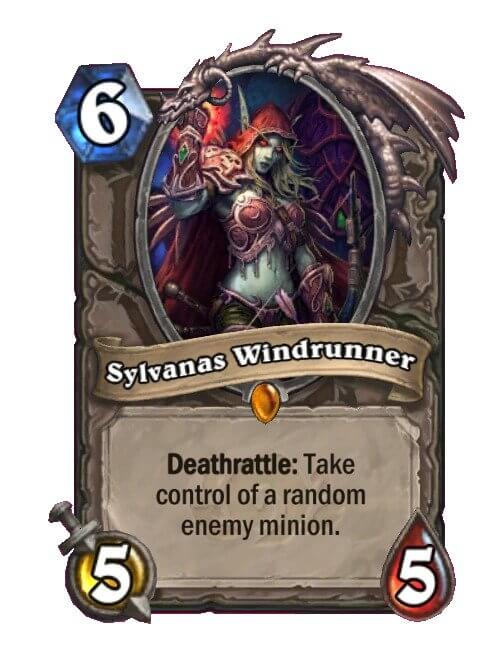
Sylvanas, the fallen ranger-general of Quel’Thalas, has a potent Deathrattle ability to take control of a random enemy minion. This effect made Sylvanas a complex card to deal with, often requiring opponents to make sub-optimal plays to minimize the value of her ability. Though she received a Nerf, increasing her cost from 5 to 6 mana, Sylvanas continued to influence the game significantly. Her presence in the Hall of Fame still causes ripples in the Wild format.
Undertaker
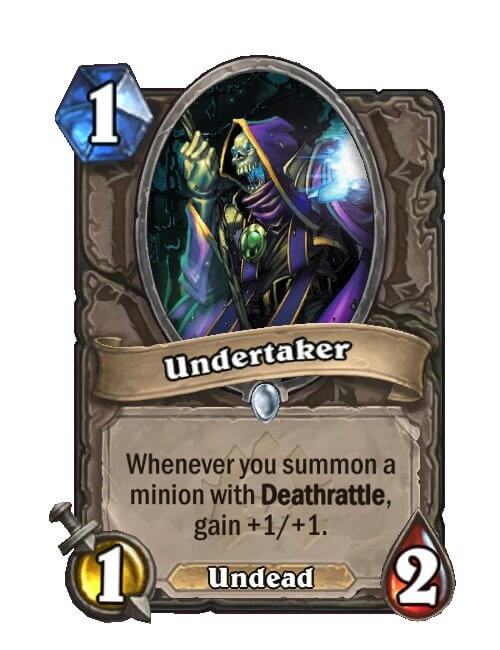
This small 1/2 minion might not seem intimidating initially, but Undertaker quickly became one of the most notorious cards in Hearthstone’s early history. Its ability to gain +1/+1 for each minion with Deathrattle that you summon gave rise to a brutally efficient early-game strategy that was hard to combat. In the heart of the Naxxramas meta, every class used this card. Eventually, the card received a significant nerf, changing the effect only to gain Attack rather than Attack and Health. This adjustment reined in its dominance but remains a testament to Undertaker’s initial impact.
Dr. Boom
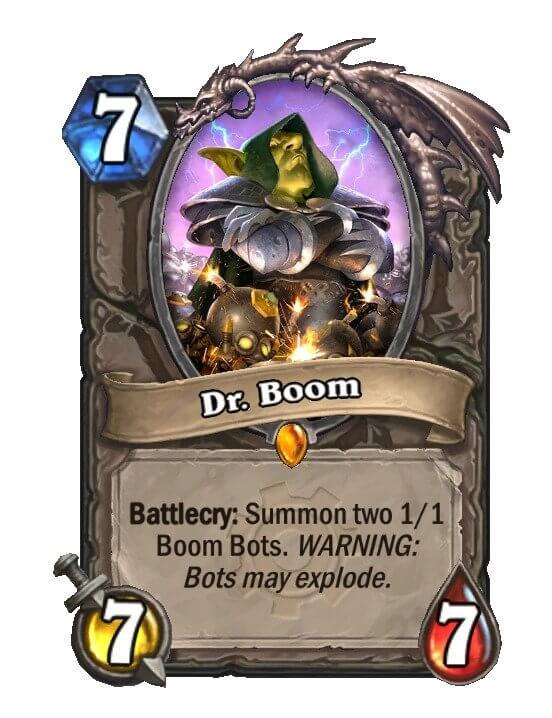
Dr. Boom, the maddest of all mad scientists, was once so omnipresent that players affectionately dubbed the metagame the “Dr. Boom meta.” Sporting solid stats and a powerful Battlecry that generates two Boom Bots, this card provided incredible value and became a staple in almost every deck. Though no direct nerfs were made to Dr. Boom, the gradual introduction of new cards and balance adjustments to other cards in the game eventually decreased its universal popularity. Despite this, Dr. Boom can still bring a sizable impact to the table in the right deck and matchup.
Emperor Thaurissan
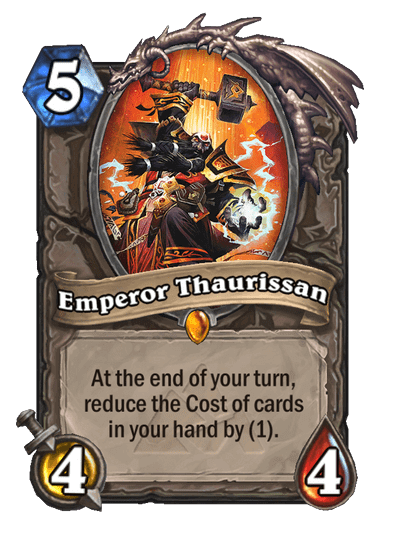
Emperor Thaurissan’s influence on Hearthstone is indelible. With an end-of-turn effect that reduces the cost of all cards in the player’s hand by one, Thaurissan opened the door to many combo strategies, fundamentally changing how decks were built and played. Cards once considered too expensive or clunky became viable, leading to some of the most intricate and devastating combos the game has seen.
Further pushing Thaurissan’s viability, he was buffed in the release of the Caverns of Time expansion (Patch 27.2), reducing his Cost, Health, and Attack by 1. Although it’s been rotated out of Standard, Thaurissan’s legacy continues to affect the Wild format.
Patches the Pirate
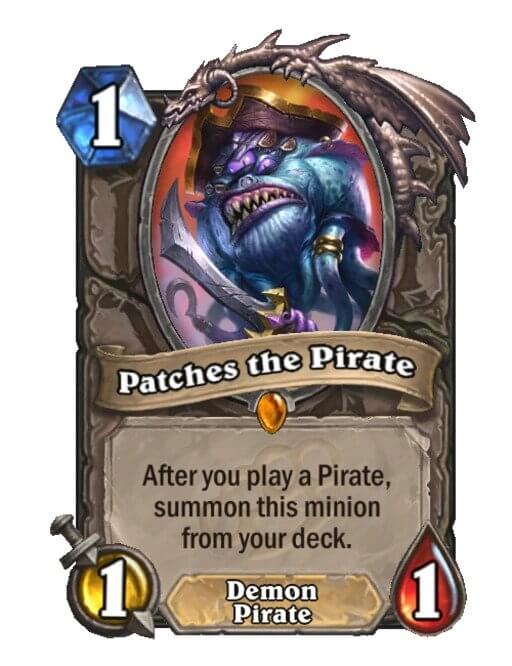
Arguably one of the most impactful cards ever to hit Hearthstone, Patches the Pirate’s entrance to the battlefield—”I’m in charge now!”—became a phrase many players grew to dread. This seemingly innocuous 1/1 pirate had a powerful effect, launching itself onto the battlefield for free whenever you played a Pirate. This ability made Patches a key player in aggressive decks, offering instant board presence and synergizing with various Pirate-themed cards. However, the card eventually received a nerf, losing its Charge ability, significantly reducing its immediate impact. Despite the nerf, Patches still holds a place in Pirate-centric decks but no longer dictates the game’s pace as it once did.
Corridor Creeper
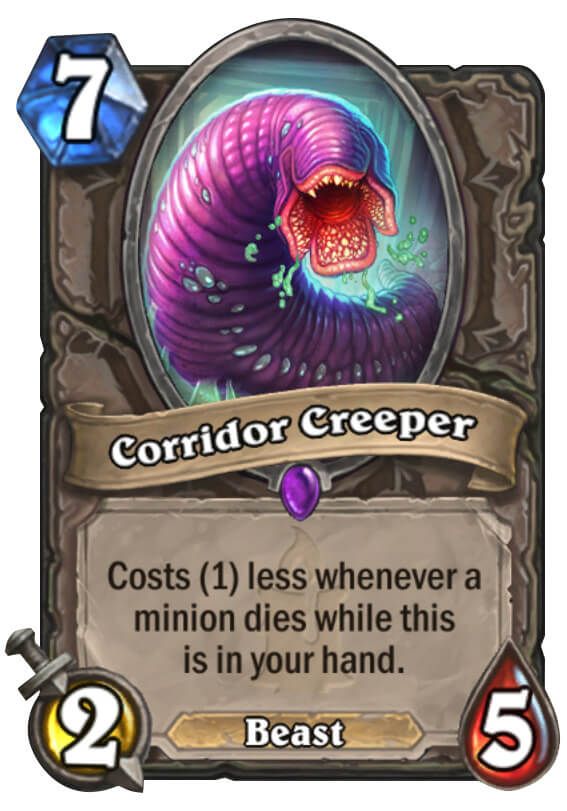
No one in the Hearthstone community predicted Corridor Creeper would be powerful when revealed in the Kobolds and Catacombs expansion. We were all proved wrong when the expansion was finally released in late 2017. Corridor Creeper burst onto the scene as one of the most powerful neutral minions in the game. Its unique mechanic, reducing its cost for each minion that dies while in your hand, made it an incredibly efficient play in many situations. It was included in almost every deck during the early Kobolds and Catacombs meta.
Two months after its release, a hefty Nerf reduced its Attack from 5 to 2, greatly diminishing its power level. Today, it has found a niche in certain decks. Despite its current usage, Corridor Creeper significantly impacted Heartstone’s history. Its unique design and the effect on the meta make it one of the best cards of all time.
Mad Scientist
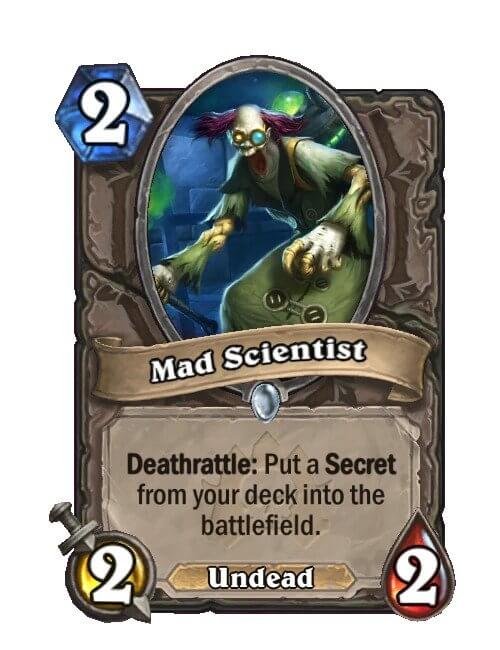
Who could forget the notorious Mad Scientist from the Naxxramas expansion? This two-cost minion had a seemingly innocent stat line but packed a punch with its Deathrattle effect, putting a random secret from your deck into the battlefield. This provided a way to cheat out Secrets ahead of their usual mana cost and thinned the deck, improving the chances of drawing into crucial cards. Although it has been rotated from Standard play, Mad Scientist remains a staple in Wild format, especially in Secret Mage decks.
Warsong Commander
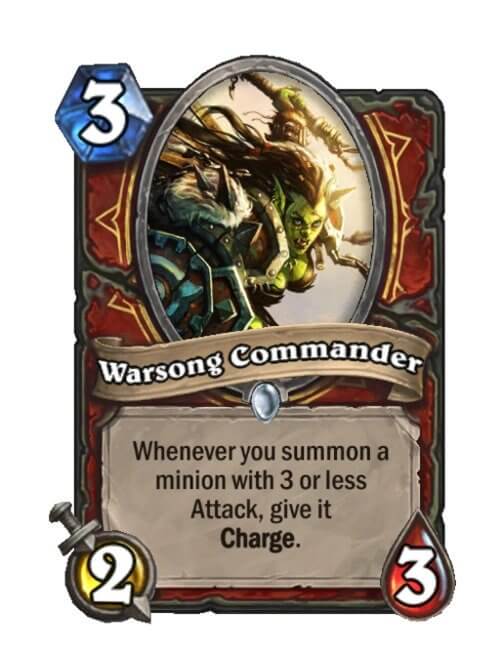
Warsong Commander, a card once so powerful it had to be drastically nerfed, was a crucial part of one of the most dominant decks in early Hearthstone – the infamous Patron Warrior. The original version of this card gave all your minions with three or less attack Charge, enabling a multitude of combos, most famously with Grim Patron. However, due to the card’s oppressive nature, it underwent a heavy nerf. It now only gives Charge to minions you summon with three or less Attack, effectively ending the reign of Patron Warrior. Years later, the card was buffed back to its original effect, making it practical for both Standard and Wild formats.
Starving Buzzard
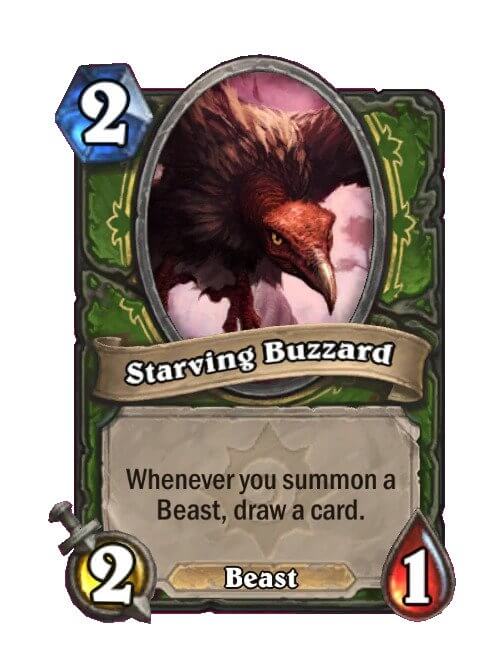
Starving Buzzard, initially a critical part of many Hunter decks, highlights the trajectory of balance changes in Hearthstone’s history. The card’s original effect of drawing a card each time a Beast was summoned shaped a powerful beast-focused, tempo-oriented strategy. However, its power level was deemed too high, leading to a drastic adjustment that increased its cost from 2 to 5 mana and reduced its Health from 2 to 1, which pushed the card out of the meta due to its significantly reduced viability.
However, in 2021, Starving Buzzard experienced a renaissance when it was once again tweaked. The card was brought back to a more manageable two-mana cost, with a stat line readjusted to 2/1 while maintaining its card draw effect. The adjustment, however, refined the draw mechanic to trigger only when a Beast is played directly from the hand, as opposed to any form of summoning. Although this incarnation of the card does not hold the overwhelming influence it had in the past, it has reintroduced some of its initial appeal and functionality within Hearthstone’s dynamic gameplay.
Unleash the Hounds
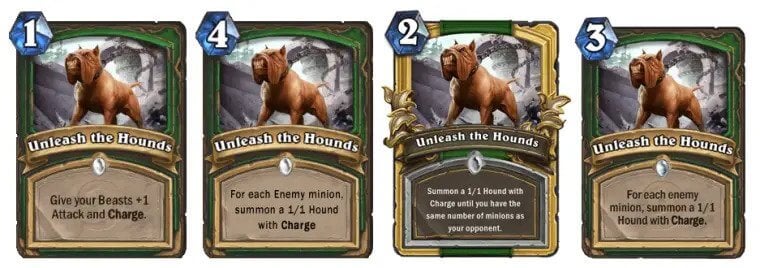
Since the early Hearthstone days, “Unleash the Hounds” has been a significant aspect of Hunter’s strategies. Its original version during the beta phase was a 1-mana spell providing Beasts with +1 Attack and Charge. This version combined powerfully with “Starving Buzzard,” which triggered a card draw whenever a Beast was summoned, but this combo proved overly dominant, leading to a redesign in Patch 1.0.0.4217 (Dec 2013). It was transformed into a 4-mana spell that summoned a 1/1 Hound with Charge for every enemy minion. Although this modification tackled some balance issues, it made the card situational and was deemed too high in mana cost.
Within a month, developers reduced the cost from 4 to 2 to combat this underuse, but further balancing was required. In Patch 1.0.0.4458 (Apr 2014), “Unleash the Hounds” received another overhaul, becoming the familiar 3-mana spell that summons a 1/1 Hound with Charge per enemy minion. Despite cost adjustments, its synergy with “Starving Buzzard” endured, leading to powerful card-draw engines that could tip the game’s balance. This eventually resulted in a “Starving Buzzard” nerf.
Today, after its many iterations and despite its early nerfs, “Unleash the Hounds” maintains a place in many Hunter decks, proving its enduring appeal and strategic value in Hearthstone’s gameplay. It’s not nearly as dominant as it used to be in the Beta, but it’s still a formidable card.
Defile
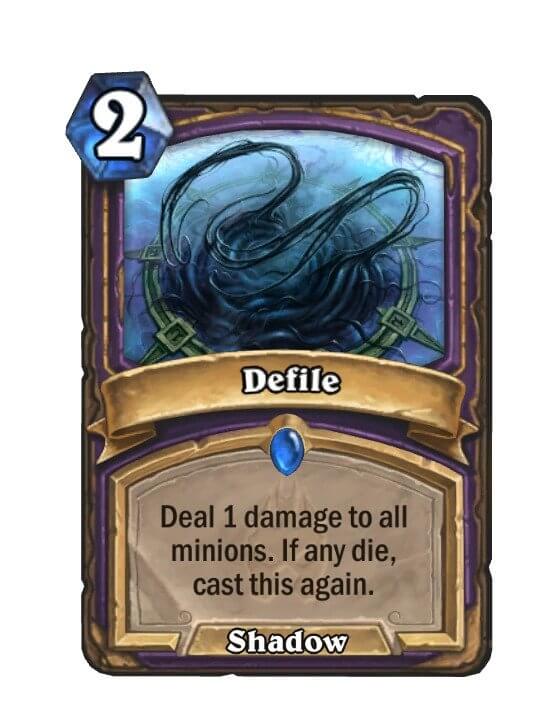
Few cards in Hearthstone can match the satisfying board clear potential of Defile. This Warlock spell, introduced in the Knights of the Frozen Throne expansion, has a simple and profoundly strategic effect: it deals one damage to all minions, and if any die, it re-casts itself. This allows for massive board clears, particularly when carefully set up with minions of sequential health values. Players need to put on their thinking caps to play this effectively.
The introduction of Defile has pushed players to think more strategically about board states, minion placement, and health values, contributing to the depth of Hearthstone’s gameplay. Albeit the intense power of the card, it’s almost universally loved by the community for its strategic playstyle and satisfying effect. It’s a perfect card in all aspects.
Malygos
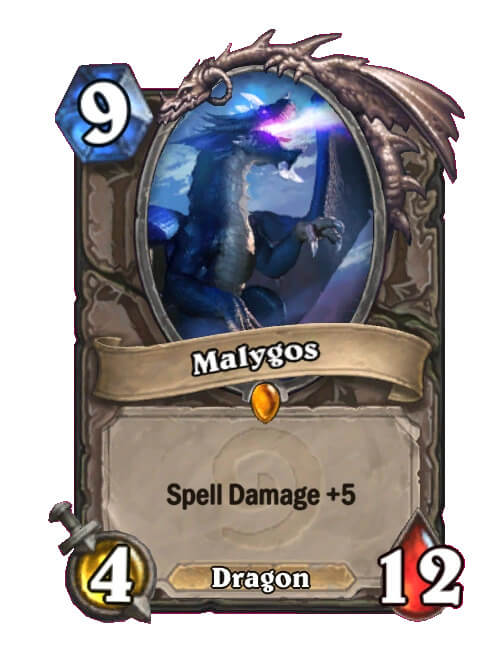
Malygos, the Spell-Weaver, is much more than another dragon card in Hearthstone. As one of the Dragon Aspects, this legendary minion boasts an impressive effect: a +5 spell damage bonus. This significant boost, paired with low-cost damage spells, opens up the potential for game-changing combos, dramatically altering the tempo and turning the tide in the player’s favor. The mere existence of Malygos in a deck adds an element of threat that opponents can’t ignore, making it an exciting card to draw and play.
Over the years, Malygos has played a crucial role in defining several notable deck archetypes. Malygos Druid, for instance, leverages this card with cheap spells such as Moonfire and Swipe for devastating, often game-ending damage. Similarly, Malygos Rogue utilizes Preparation and Eviscerate alongside Malygos for an explosive finish. These decks exemplify Hearthstone’s strategic depth and the creative deck-building opportunities it offers.
However, Malygos’s role in the meta is not static. It has seen periods of high relevance and obscurity, dictated mainly by shifts in the game’s meta and the introduction or retirement of certain cards. Cycling supportive spells and minions through the standard rotation often determines Malygos’s viability in competitive play. Yet despite these fluctuations, Malygos remains a potent tool in the arsenal of players who appreciate crafting intricate, high-damage combos, thereby solidifying its place in Hearthstone’s history.
The Demon Seed
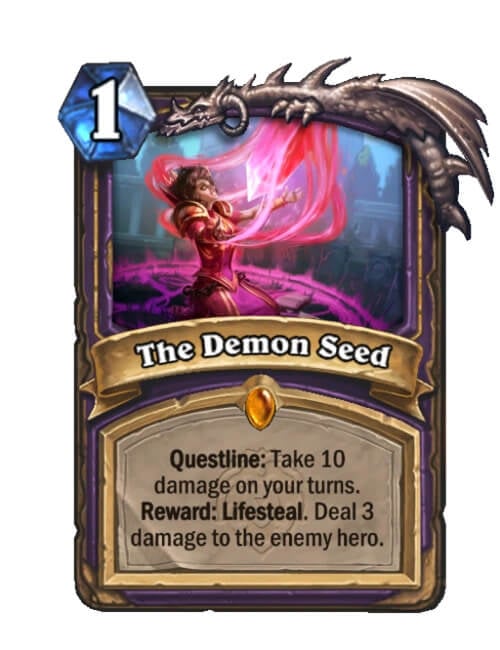
The Demon Seed questline, with its high-risk, high-reward gameplay, represents a cornerstone of the Warlock class in Hearthstone. Initiated by the titular card and continuing with Establish the Link, this intricate dance of self-inflicted damage encapsulates the quintessential Warlock ethos of trading Health for power. However, this was not without controversy.
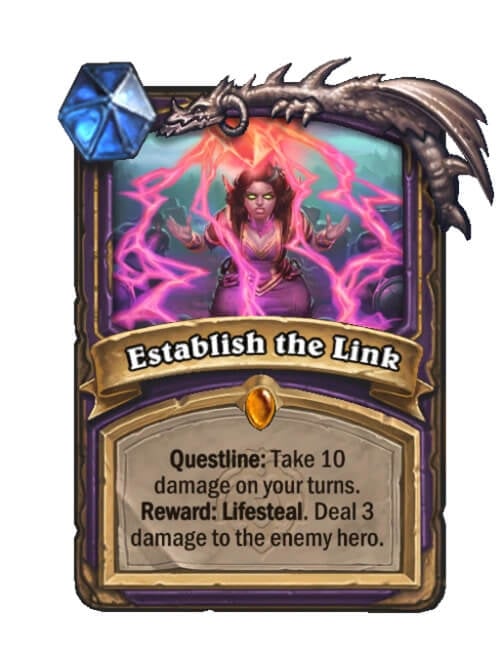
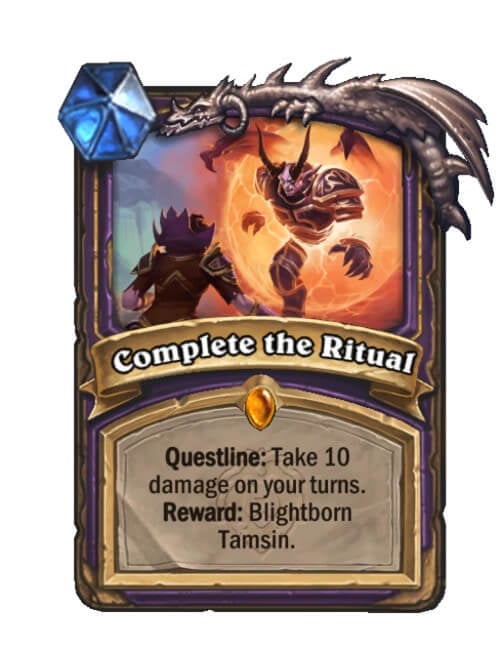
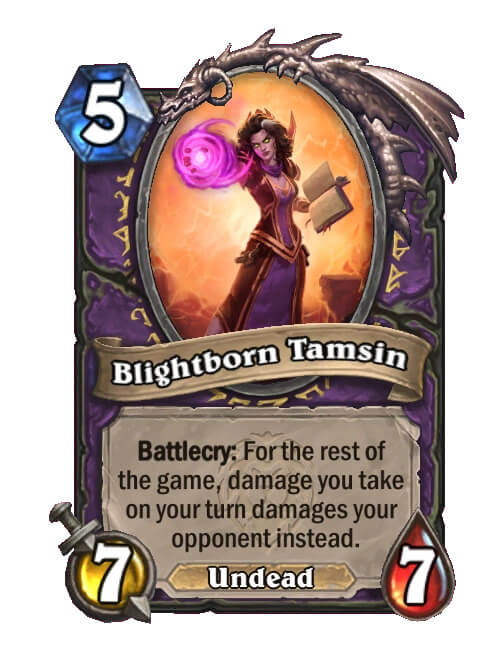
This mechanic has garnered significant criticism from the player base due to its ability to fundamentally upend the tempo of a game, particularly following the deployment of the final reward, Blightborn Tamsin. This game-altering legendary card not only transfers self-inflicted harm to the opponent but also dictates a profound shift in gameplay. The Demon Seed’s notorious reputation, bolstered by its initial ban and subsequent reintroduction to the Wild format, fueled near-universal disdain within the community. Despite this, or perhaps because of it, the Demon Seed questline has indelibly left its mark on Hearthstone, cementing its place in the annals of the game’s history as one of its most contentious yet impactful mechanics.
Tirion Fordring
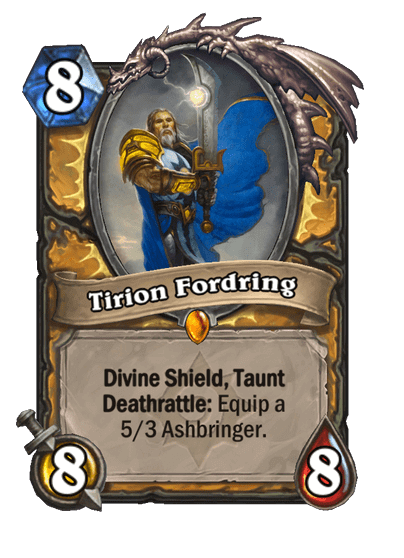
Representing one of the most powerful Deathrattle effects in the game, Tirion Fordring is a shining beacon among Paladin cards. His robust stats and Divine Shield make him a tough minion to deal with, but his Deathrattle puts him over the top, equipping you with the 5/3 weapon Ashbringer. It’s truly rare for a card to be so powerful for so long without a single Nerf (and it does not need one).
In fact, in Patch 27.4.2, Tirion received a buff; increasing his Attack and Health to 8. He is even more powerful than before! Tirion exemplifies the protective and retaliatory playstyle of Paladins, making him one of the most iconic class cards in Hearthstone history.
King Krush
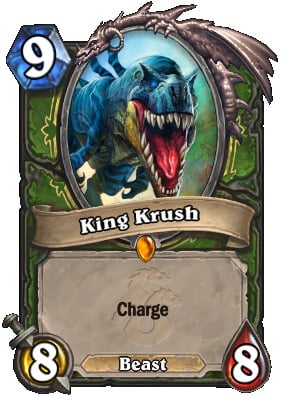
Last, we have King Krush, the legendary dinosaur with a thunderous entrance, and the classic Hunter trait – Charge. King Krush is a powerhouse regarding raw stats and embodies the Hunter class’s aggressive, beast-synergistic playstyle. While the meta has shifted and changed, often leaving the King on the sidelines, this colossal beast can quickly turn the game to a swift conclusion in the right deck and situation. Currently, King Krush is still seeing play. Despite his high mana cost, the potential of immediate damage keeps King Krush an ever-relevant card in the world of Hearthstone.
As the world of Hearthstone continues to evolve, so do the strategies and tactics players use to achieve victory. From the audacious healing of Reno Jackson to the whimsical chaos of Yogg-Saron, these cards have all significantly impacted the Hearthstone meta. They have reshaped how we build decks, approach matches and understand the game. Whether they introduced unique mechanics, like Zephrys the Great and Baku the Mooneater, or birthed entirely new deck archetypes, like Undertaker and Warsong Commander, their influences are deeply rooted in Hearthstone’s history.
These are the 25 greatest Hearthstone cards of all time that have defined, redefined, and continually influenced Hearthstone’s captivating and dynamic landscape.
For more great gaming news, tips, and reviews, check us out at Shark Games.
